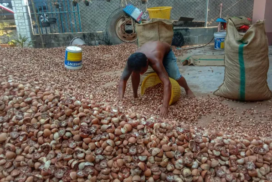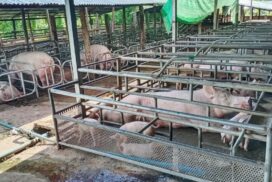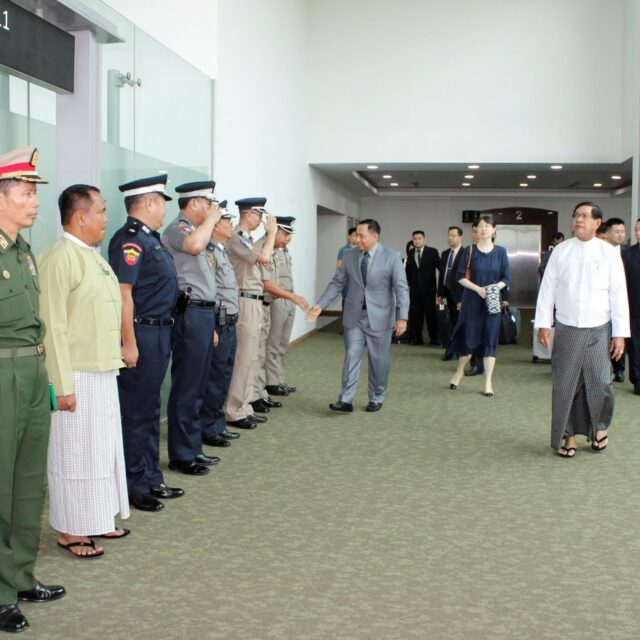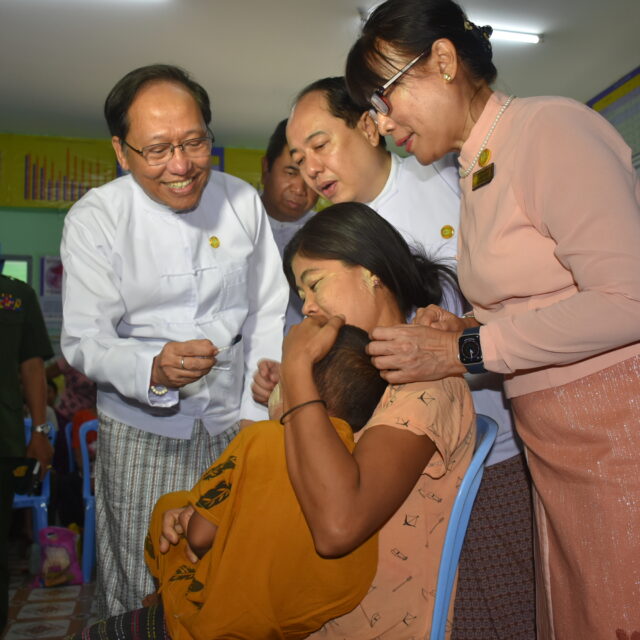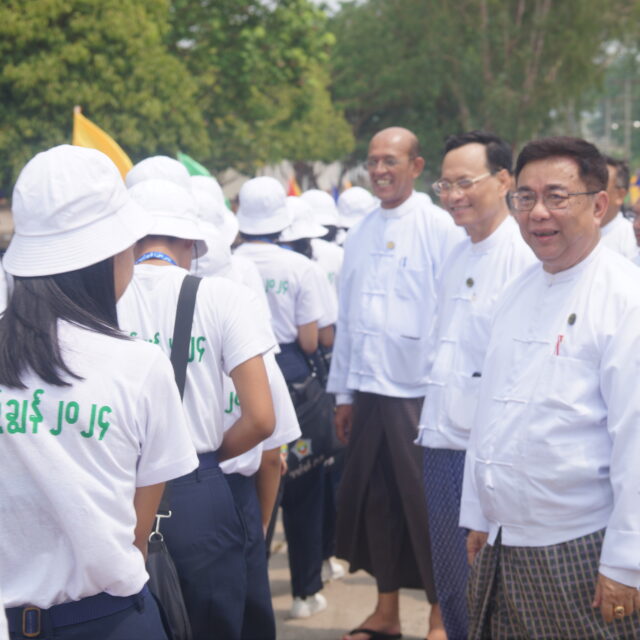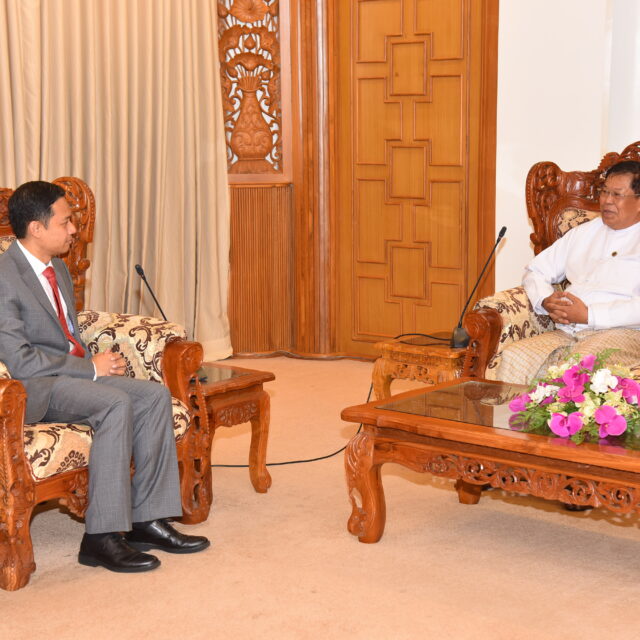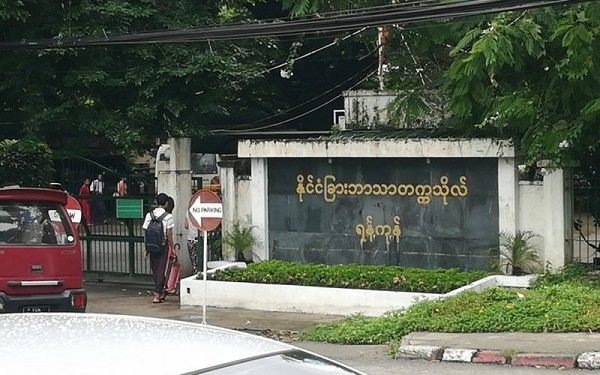The agriculture sector is the backbone of Myanmar and it is also relying on the livestock sector. The country is standing proudly with its strategic 2,230 kilometres long coastlines in the western Rakhine State and southern Taninthayi Region, belonging to the rich marine resources. Myanmar’s fishery product is beyond self-sufficiency and it generates foreign currencies from the exports. Myanmar shipped rohu and other fishery products. The income depends on the market demand and quality of the fishery products. Myanmar is harvesting the globally demanded one fish species (Hilsa shad) in Myanmar’s sea and the coastlines. Maintaining and increasing in production of that species can generate foreign incomes and enhance the socio-economy of the livelihood of the local community. That species is required to be cared for to keep abreast with the regional countries.
Migratory journey for spawning and juvenile rearing of Hilsa shad
Hilsa shad is anadromous fish species, and it lives in the sea and migrates upstream to the freshwater environment of the river system for spawning. The migratory journey usually covers up to 1,200 kilometres for spawning, with 20 kilometres per day. It migrates in groups from Asian waters to Iran’s the Persian Gulf. It breeds eggs in the sand during June-July and January-February periods. It can produce up to 2 million eggs. Besides natural causes, the main cause of early death is capture with other species. The morality of Hilsa larvae is about 25 per cent due to the catch with the different types of nets.
Fishing spot locations
The Hilsa shad is primarily harvested in Rakhine and Mon states and Dawei and Myeik districts in Taninthayi Region, Bago Region and Yangon Region. The catch has decreased starting from 15 years ago. The best fishing spots are Ayeyawady Region and Mon State.
Hilsa fishing with different types of nets
Gillnets and entangling nets are used in the manageable Hilsa fishing in inshore areas and rivers, while large-scale commercial fishing operators use purse seine nets and drift nets. There are 685 large-scale commercial fishing vessels and about 15,000 inshore vessels.
from page-1
Market stability and value-added potentials
Myanmar yearly exports 10,000-13,000 tonnes of Tenualosa ilisha and Tenualosa Toil to 36 foreign countries from 22 cold storage facilities, mainly to China. The major purchasing countries are China, Saudi Arabia, India, the US and the UAE. It is a popular food in India. As Myanmar is able to ship the Hilsa shad to the top consuming country like India, it ensures market stability. Moreover, the value-added products with smooth freight flow bring about economic benefits.
Research on breeding and culture status of Hilsa shad
With technical assistance from Chinese experts in 2012, the onboard breeding trial of Hilsa was conducted at the Kyauktanthar hatchery in Yangon Region so that the marketable commercially valued Hilsa species can be produced. Research activities were also carried out for the sustainable Hilsa resource in coordination with Food and Agriculture Organization (FAO) and South-East Asian Fisheries Development Centre (SEAFDEC). In 2015 and 2018, Myanmar Fisheries Department, Japan International Cooperation Agency and Thailand International Cooperation Agency conducted research on Hilsa biology, spawning, breeding and migration behaviours and collected the species. Myanmar and Thailand also agreed on joint research for Hilsa and rohu. That project was delayed owing to the COVID-19 impacts. Myanmar’s native larvae will be sent to Thailand for research.
Degradation of marine resources and depletion of fish
Climate change affects all regions across the world. Lack of wastewater treatment in the factories, livestock businesses, mining activities and agribusinesses, improper waste disposal, sand dredging, having waterways blocking Hilsa migrating journey, blocking with the dams and reservoirs, developing farmland areas, weak compliance with the fishery regulation in terms of the size of fishing nets, relaxation during the fishing close season for various purposes and those unscrupulous operators in the aquaculture industry are contributing factors to the depletion of fish and degradation of marine resources.
Effective management for sustainable Hilsa shad
Hilsa shad migrates to freshwater for spawning and return to sea in groups. A proper way of fishing is required. So far, 2,288.2 acres in Ayeyawady Region, 2,065 in Rakhine State, over 600,000 in Mon State and 11 spots in Myanmar coastal areas have been set as the conservation areas in the country. Myanmar has a prospect to be a top export country some time. The science-based effective management approach must be improved to do so.
Long-term sustainability of Hilsa for future generations
Setting close season for fishing depending on the Hilsa biology and ecosystem, releasing a statement and raising awareness regarding enforcement, building database and making research analysis on the life cycle of Hilsa shad for the effective conservation management approaches, supporting marine labourers with sustainable fish resources, creating other career opportunities as substitution, creating jobs with technology and surveillance institutions, building public-private partnership between the government and private entrepreneurs to strengthen domestic and export markets and connecting to regional countries will ensure yearly foreign income from Hilsa production. Marine conservation practices have to pass for future generations.
World Hilsa production
Hilsa culture must be conducted in line with conservation measures. It will undoubtedly enhance the Hilsa production. According to Bangladesh’s WorldFish (a nonprofit research and innovation institution), Bangladesh accounts for 85 per cent of the world’s Hilsa production. It shut down the fishing season during the Hilsa spawning season between 6 and 28 October. During the 22-day close season, their government yearly provides funds for those fishers holding a licence under the social security programme. Bangladesh’s growing Hilsa production is attributed to the fishing restriction on Hilsa larvae and closing areas for fishing during the breeding season and setting protected areas to prevent fishing.
It could maintain the long-term sustainability in Hilsa production when it produced 65 per cent of the world’s Hilsa, whereas the neighbouring countries India, Myanmar, Pakistan, and Sri Lanka saw a decline in production. India followed Bangladesh in Hilsa production, constituting 25 per cent of production. Nevertheless, the Hilsa production last year plunged by 10 per cent. Myanmar is the third-largest producer of Hilsa with only three per cent. The remaining was from the countries – Iran, Iraq and Kuwait – according to the global survey.
Unique characteristic and genetic selection
India’s fisheries research centre had discussed the increase in Bangladesh’s Hilsa production. Enhanced Coastal Fisheries in Bangladesh (ECOFISHBD) project leader Prof Abdul Wahab presented a successful production of Hilsa shad in Bangladesh. The governmental institutions from the regional countries adopted breeding methods to boost production, he said.
Thanks to the compliance with restriction for fishing of female Hilsa shad during breeding season and larvae and no fishing operation in the extended protected areas. In the 2018-2019 period, World Fish made the first-ever study on Hilsa production and unique characteristics and the genetic selection such as growth.
Social security programme for fishers during the close season
Hilsa shad from the protected areas is free to migrate for spawning and return to the sea. The production rose in 2022 on account of fishing with 4.5 -6.5 cm mesh size nets to prevent from catching the larvae, Minister Mr Rezaul Karim for Fisheries and Livestock of Bangladesh analyzed. Marine resources observers also pointed out a good outcome with the social security programme for the fishers during the 22-day close season for fishing.
Research strategies for the development of Hilsa culture
Migratory Hilsa shad species lives in the Bay of Bengal and they usually migrate in groups in Myanmar, India and Bangladesh. Good Aquaculture Methods and Practices can bring the long-term sustainability of Hilsa resources. The research on protected areas for their breeding grounds, maintaining their migratory route and observing the natural breeding status have been carried out in Myanmar waters. Research strategies will ensure the long-term sustainability of Hilsa.
Myanmar’s Hilsa market with good prospects
As per Bangladesh’s research in 2014, the average weight of a Hilsa shad is 510 grammes (31.8 ticals). The growth of Hilsa shad increased to 915 grammes (57.1 ticals) in recent years. Approximately 1.5-2.5 kilogrammes weight Hilsa shad were exported in 2021. Hilsa shad from India, Myanmar and the countries close to the Arabian sea is 500 grammes (31.25 ticals) and 60 grammes (37.5 ticals) weigh on average. In order to compete with Bangladesh’s Hilsa shad, conservation measures for Hilsa larvae must be strictly taken. Myanmar must focus on promoting the production depending on scientific research. Enforcement and PPP in the close season and conserving the protected areas will protect the larvae and enhance Myanmar’s Hilsa production.
With continuous efforts, Myanmar will be on track to the top export country some time.
Translated.


